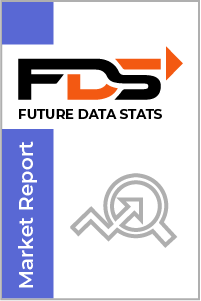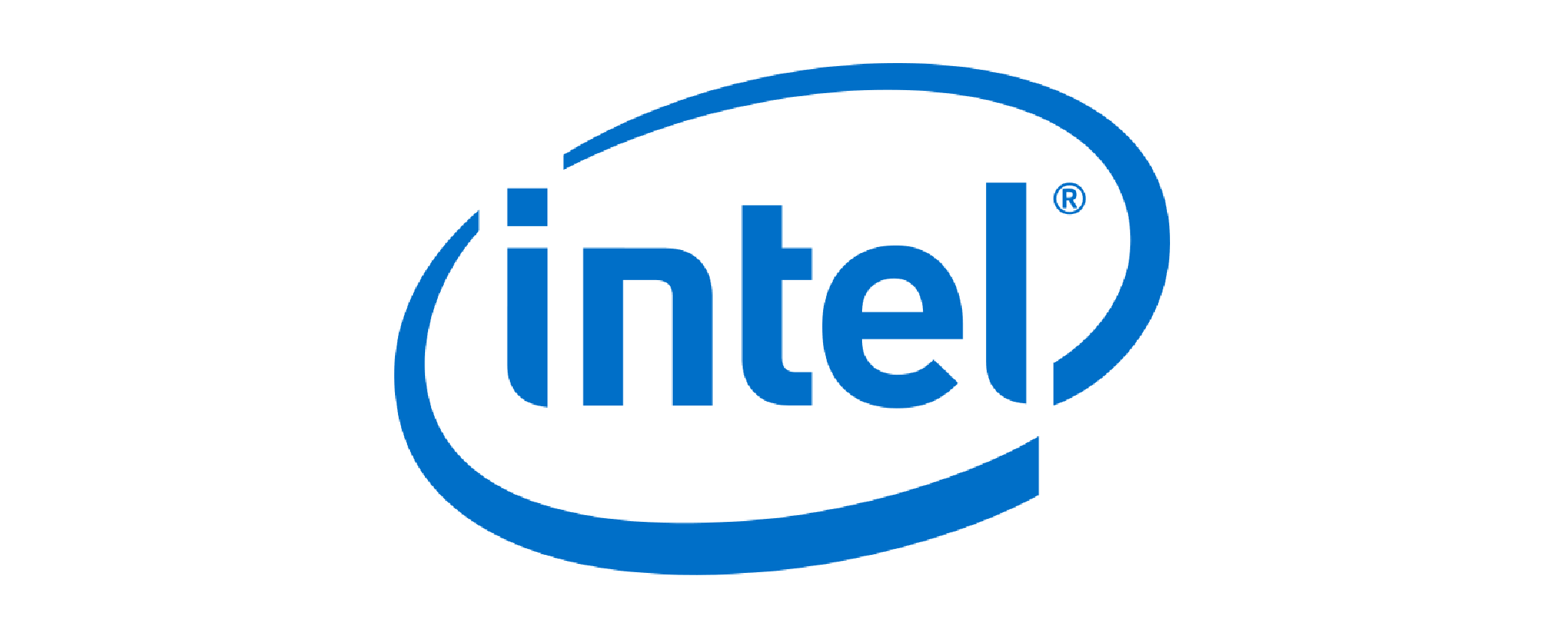The global AI Personal Finance Planners Market size was valued at USD 1.5 Billion in 2024 and is projected to expand at a compound annual growth rate (CAGR) of 25% during the forecast period, reaching a value of USD 7.8 Billion by 2032.
The "AI Personal Finance Planners Market Research Report" from Future Data Stats offers a comprehensive analysis of the Market landscape, leveraging historical data from 2021 to 2023 to highlight significant trends and growth patterns. With 2024 as a baseline year, the report examines consumer behaviors, competitive dynamics, and regulatory influences shaping the industry. Going beyond basic analysis, it provides a well-researched forecast for 2025 to 2033. Utilizing advanced data analysis techniques, the report outlines the Market's growth path, identifies emerging opportunities, and anticipates potential challenges, equipping stakeholders with essential insights to navigate the evolving Market environment effectively.
MARKET OVERVIEW:
The AI Personal Finance Planners Market aims to empower people and organizations to manage their money smarter and more efficiently. It combines powerful algorithms and user-friendly tools to help users budget better, save more, and invest wisely. By analyzing real-time data and financial trends, these AI tools remove guesswork and support informed decision-making. This market also bridges the gap between advanced financial strategies and everyday needs. Whether for personal goals or business growth, AI personal finance planners offer accessible solutions that adapt to each user's situation. The purpose is clear: to make financial planning simpler, smarter, and tailored to the needs of every user.
MARKET DYNAMICS:
Recent trends in the AI Personal Finance Planners Market highlight a clear shift towards more personalized, user-focused financial experiences. Financial institutions and technology firms are investing in advanced analytics and conversational AI to create seamless digital advisors. Consumers, meanwhile, are showing strong demand for tools that not only track spending but also predict future needs and offer actionable advice in real time. These changes show a deepening trust in AI to guide important financial decisions. Looking ahead, the market is set to expand further as emerging trends like hyper-personalized services and integrated financial ecosystems gain traction. Businesses see new opportunities in AI tools that go beyond budgeting, such as retirement planning and tax optimization. As these solutions become more intuitive and customizable, companies can build new revenue streams and forge stronger connections with customers who want financial clarity and control.
Increased awareness of financial literacy drives this demand, prompting consumers to invest in professional guidance. Many are recognizing the importance of budgeting, saving, and planning for retirement, which fuels the need for personal finance planners. Additionally, technological advancements, such as mobile apps and online platforms, have made financial planning more accessible, enabling planners to reach a wider audience. However, the market faces several challenges that could hinder its growth. Economic uncertainty often leads to reduced discretionary spending, making individuals hesitant to invest in financial planning services. Furthermore, the abundance of free online resources can deter potential clients from seeking professional help. Despite these restraints, significant opportunities exist for personal finance planners. By adapting to evolving consumer needs and leveraging technology, planners can offer tailored services that address specific financial goals, ultimately enhancing their value in a competitive landscape.
AI PERSONAL FINANCE PLANNERS MARKET SEGMENTATION ANALYSIS
BY TYPE:
AI Personal Finance Planners include several powerful solutions that change how individuals and businesses manage money. Robo-advisors stand out for their automated investment advice, adapting to each user’s risk tolerance and financial goals. Chatbots and virtual assistants deliver tailored insights through natural language conversations, making financial planning accessible and intuitive for users with varied expertise. These smart tools also promote financial literacy by guiding users through complex decisions in real time, ensuring people feel confident about their financial paths. AI-driven budgeting tools further strengthen this market segment by helping users control daily expenses and meet long-term goals. These tools analyze spending patterns and suggest adjustments, empowering users to create budgets that reflect their evolving needs. In parallel, AI-enabled investment platforms use advanced algorithms to help investors build personalized portfolios that adapt to market shifts. Automated savings tools also make a significant impact by automatically allocating funds to meet savings milestones, easing the path to financial wellness for millions worldwide.
The Others category within this segment includes innovative financial wellness apps and hybrid advisory platforms that blend AI with human expertise. These emerging solutions cater to people who seek a balance between automation and human advice. As digital transformation reshapes financial planning, the diversity within this segment ensures that users—regardless of their financial literacy—can find tools that simplify and enhance their financial journeys. This growing market diversity is driven by constant innovation, user-friendly experiences, and a growing demand for data-backed insights.
BY DEPLOYMENT:
Deployment models play a vital role in shaping how AI Personal Finance Planners reach users. Cloud-based solutions dominate this segment, offering flexibility and scalability. They remove the need for local infrastructure, making advanced financial planning tools available to everyone with an internet connection. Cloud-based deployments also support real-time updates and seamless collaboration between users and advisors, helping deliver personalized insights at speed. On-premise deployments, on the other hand, remain important for organizations that prioritize data privacy and regulatory compliance. Banks, wealth management firms, and other financial institutions often choose on-premise models to maintain full control over sensitive financial data. These solutions offer tailored security measures and customized integrations with existing IT systems. In highly regulated industries or markets where trust is paramount, on-premise deployment ensures compliance and user confidence.
The dynamic between cloud-based and on-premise deployments reflects the growing complexity of the financial services landscape. While cloud deployments accelerate innovation and support large user bases, on-premise solutions continue to appeal to businesses that value data sovereignty. As AI tools evolve, hybrid deployment strategies may become more popular, allowing organizations to balance security with innovation. This interplay of deployment models ensures that AI Personal Finance Planners cater to a wide range of user needs and regulatory landscapes.
BY END-USER:
The end-user landscape of the AI Personal Finance Planners Market reveals the broad impact of these solutions. Individuals, who make up a significant portion of this market, increasingly rely on AI-driven financial planners to manage everyday budgets, savings goals, and investments. With intuitive interfaces and real-time insights, these tools empower individuals to take charge of their financial futures with confidence and independence. Small and Medium Enterprises (SMEs) are also embracing AI-driven financial planning to streamline their cash flows, manage debts, and plan growth initiatives. By integrating AI tools into their financial operations, SMEs gain actionable insights that help them navigate market fluctuations and make smarter decisions. These solutions provide them with the same advanced financial strategies previously accessible only to large firms, leveling the playing field for smaller players.
For large enterprises, AI Personal Finance Planners unlock new ways to engage employees and customers. Enterprises leverage AI to develop personalized financial wellness programs for their workforce, enhancing job satisfaction and retention. Financial institutions, meanwhile, deploy these solutions to expand their digital offerings and provide differentiated value to clients. Across individuals, SMEs, and large enterprises, AI-powered financial planners are driving a shift toward proactive, data-informed decision-making in the financial world.
BY APPLICATION:
Applications for AI Personal Finance Planners span a wide range of financial tasks, each contributing to more informed and efficient financial management. Budgeting and expense tracking tools leverage AI to analyze transactions, identify spending patterns, and suggest adjustments. These applications enable users to plan smarter and avoid overspending, creating a foundation for long-term financial stability. As users engage with these tools, they gain a clearer picture of their financial health and learn to make intentional decisions. Investment management applications tap into AI’s predictive power to build tailored investment portfolios. AI evaluates market data, risk profiles, and goals to suggest investments that align with each user’s needs. In parallel, savings and goal tracking applications automate savings strategies, making it easier for users to reach milestones without constant manual effort. These applications simplify the journey to major life goals, from home ownership to retirement, by removing guesswork and friction.
Debt management, retirement planning, and tax planning applications round out the AI Personal Finance Planners Market’s application landscape. Debt management tools help users prioritize and repay loans efficiently. Retirement planning solutions project future scenarios, ensuring users can retire comfortably. Tax planning applications identify deductions and savings opportunities, reducing stress during tax season. Collectively, these applications empower users with the insights and tools they need to make confident, data-driven financial decisions in every stage of life.
REGIONAL ANALYSIS:
In North America and Europe, advanced technology adoption and strong digital infrastructures support steady market expansion. Financial institutions in these regions actively collaborate with technology firms to develop AI-based tools that simplify financial management and boost customer engagement. Meanwhile, strict data privacy laws in Europe are encouraging the use of transparent, secure solutions tailored to local regulations.
In Asia Pacific, Latin America, and the Middle East and Africa, the market is growing as consumers demand more accessible financial tools. In Asia Pacific, mobile-first solutions and a large unbanked population are driving adoption of AI financial planners. Latin America sees growing interest in affordable, automated tools for budgeting and debt management. In the Middle East and Africa, digital banking growth and financial inclusion initiatives create opportunities for AI-powered solutions that meet diverse needs. Overall, each region’s growth reflects a common goal: to make financial planning easier and more personalized.
MERGERS & ACQUISITIONS:
- In Jan 2024: Intuit acquired AI-powered budgeting startup FinMind to enhance its Mint platform.
- In Feb 2024: SoFi partnered with OpenAI to integrate advanced AI chatbots into its financial planning tools.
- In Mar 2024: Robinhood launched an AI-driven financial advisor feature for personalized investment recommendations.
- In Apr 2024: NerdWallet acquired AI-based financial literacy platform Savvy to expand its educational tools.
- In May 2024: Betterment merged with AI-driven wealth management firm Wealthify to strengthen automated investing.
- In Jun 2024: Goldman Sachs acquired AI personal finance app Clarity Money to boost its Marcus platform.
- In Jul 2024: Chime introduced an AI-powered savings assistant to help users optimize their spending habits.
- In Aug 2024: Credit Karma integrated generative AI for real-time personalized financial advice.
- In Sep 2024: PayPal acquired AI budgeting app Albert to enhance its financial wellness offerings.
- In Oct 2024: Morgan Stanley expanded its AI financial planning tools through a partnership with OpenAI.
- In Nov 2024: YNAB (You Need A Budget) launched an AI-driven forecasting feature for long-term financial planning.
- In Dec 2024: Revolut acquired AI tax-planning startup TaxFix to streamline financial management for users.
KEY MARKET PLAYERS:
- Intuit (Mint, TurboTax)
- Betterment
- Wealthfront
- Personal Capital (Empower)
- Robinhood
- SoFi
- NerdWallet
- YNAB (You Need A Budget)
- Acorns
- Chime
- Credit Karma (Intuit)
- Clarity Money (Goldman Sachs)
- Albert
- Digit
- Qapital
- Empower
- Revolut
- MoneyLion
- Wally
- PocketGuard
AI Personal Finance Planners Market: Table of Contents
Executive Summary
Market Overview
Market Dynamics
- Drivers
- Restraints
- Opportunities
- Challenges
Market Trends and Developments
Market Segmentation
- By Type
- By Deployment
- By End-User
- By Application
Competitive Landscape
- Market Share Analysis
- Competitive Positioning
Company Profiles
Future Outlook
Conclusion
Appendix
- Research Methodology
- Data Sources
- Disclaimer
AI Personal Finance Planners Market Segmentation
By Type:
- Robo-Advisors
- Chatbots and Virtual Assistants
- AI-Driven Budgeting Tools
- AI-Enabled Investment Platforms
- Automated Savings Tools
- Others
By Deployment:
- Cloud-Based
- On-Premise
By End-User:
- Individuals
- Small and Medium Enterprises (SMEs)
- Large Enterprises
By Application:
- Budgeting and Expense Tracking
- Investment Management
- Savings and Goal Tracking
- Debt Management
- Retirement Planning
- Tax Planning
- Others
By Geography:
- North America (USA, Canada, Mexico)
- Europe (UK, Germany, France, Italy, Spain, Rest of Europe)
- Asia-Pacific (China, Japan, Australia, South Korea, India, Rest of Asia-Pacific)
- South America (Brazil, Argentina, Rest of South America)
- Middle East and Africa (GCC Countries, South Africa, Rest of MEA)
WHY SHOULD YOU INVEST IN A MARKET RESEARCH REPORT?
Smarter Business Decisions:
A high-quality market research report delivers valuable insights into industry trends, customer preferences, and competitor strategies. With solid data guiding your choices, you can minimize risks and confidently pursue new opportunities—whether launching a product or expanding into new markets.
Spot Hidden Opportunities:
Market research uncovers unmet customer needs and emerging trends before they become mainstream. By aligning your products or services with these opportunities, you can stay ahead of the competition and capture untapped demand.
Know Your Competition Inside Out:
Gain a clear picture of your competitors' strengths, weaknesses, and strategies. This knowledge helps you refine your unique selling points, craft stronger positioning, and outmaneuver rivals effectively.
Sharper, More Effective Marketing:
Understanding your audience is key to successful marketing. Market research reveals who your customers are, what drives their decisions, and how they engage with brands. With these insights, you can create tailored campaigns that deliver better results and higher ROI.
Reduce Risks Before They Arise:
Every business move carries some risk—but research helps you anticipate challenges before they become costly. By analyzing market conditions and potential obstacles, you can make proactive adjustments to protect your bottom line and reputation.
Strengthen Your Case for Funding:
Investors and lenders want proof of market potential before backing a business. A well-researched report provides the data-driven evidence they need, boosting your credibility and increasing your chances of securing capital.
Stay Ahead of Industry Shifts:
Markets evolve fast, with new technologies, regulations, and consumer behaviors constantly reshaping the landscape. Regular market research ensures you stay informed, adapt quickly, and maintain a competitive edge in your industry.
RESEARCH METHODOLOGY AT FUTURE DATA STATS
At Future Data Stats, we combine decades of industry expertise with cutting-edge research techniques to deliver unparalleled market intelligence. Our team of seasoned analysts employs a dynamic, data-driven approach to uncover actionable insights, helping businesses navigate complex market landscapes with confidence.
Comprehensive & Cutting-Edge Market Analysis
We go beyond surface-level trends to provide a 360-degree view of market dynamics. Our research methodology is designed to:
✔ Accurately assess market size, growth patterns, and competitive landscapes.
✔ Identify emerging opportunities through real-time trend analysis and predictive modeling.
✔ Validate findings with high-quality data, expert consultations, and independent verification.
Our insights empower decision-makers with strategic clarity, ensuring they stay ahead in rapidly evolving industries.
Multi-Source Data Collection & Validation
We leverage a diverse mix of primary and secondary research sources, including:
- In-depth stakeholder interviews (industry leaders, suppliers, distributors, and end-users)
- Statistical databases & market reports from authoritative global sources
- Regional market intelligence to capture localized trends and demand shifts
- Proprietary analytical models tailored to specific industry needs
- By cross-verifying data from multiple streams, we ensure maximum accuracy and reliability.
Key Advantages of Our Research Approach
- Actionable Intelligence – Clear, data-backed recommendations for strategic planning.
- Technology-Enhanced Accuracy – Advanced tools for data validation and trend forecasting.
- Unbiased Insights – Independent analysis free from external influence.
Our Two-Tier Research Framework
- Primary Research – Direct Industry Engagement
- Expert Interviews: Over 25+ hours of discussions with key stakeholders across the value chain.
- Targeted Surveys: Structured questionnaires for KOLs (Key Opinion Leaders) to gauge market sentiment.
- Competitive Benchmarking: Assessing leading players to determine market positioning.
- Secondary Research – Extensive Data Synthesis
- Analysis of 3,000+ documents, including industry reports, whitepapers, and regulatory publications.
- Global & regional data mining from government databases, trade journals, and financial reports.
- Macroeconomic & sector-specific trend mapping for long-term forecasting.
Dual Analytical Approach
We employ both top-down and bottom-up methodologies to ensure precision:
- Bottom-Up Analysis: Calculating market size from granular data, ensuring detailed accuracy.
- Top-Down Assessment: Validating findings through macroeconomic indicators and industry benchmarks.
Why Choose Future Data Stats?
✔ 70+ years of collective expertise in market intelligence.
✔ Customized research models for sector-specific accuracy.
✔ Transparent, reliable, and forward-thinking insights.
With Future Data Stats, you don’t just get data—you get a strategic advantage. Partner with us to unlock the full potential of your market decisions.
AI Personal Finance Planners Market Dynamic Factors
Drivers:
- Consumers demand real-time financial insights.
- Financial institutions embrace digital advisory tools.
- Startups offer user-friendly AI finance solutions.
Restraints:
- Users worry about data privacy and security.
- Limited awareness in developing economies.
- Technical glitches affect user experience.
Opportunities:
- Digital transformation opens new possibilities.
- Customizable AI tools attract young investors.
- Partnerships with banks can expand reach.
Challenges:
- Regulatory changes disrupt service models.
- Complex algorithms create transparency concerns.
- Competition grows as new players enter.
Regional Key Trends Regional Key Trends Analysis
North America:
- AI tools integrate with banking apps.
- Financial literacy platforms grow quickly.
- Startups collaborate with large banks.
Europe:
- Privacy-focused AI solutions gain traction.
- AI tools meet sustainability investing goals.
- Digital-only banks adopt advanced AI features.
Asia Pacific:
- Mobile-based AI finance apps surge in use.
- Local languages support drives adoption.
- Fintech partnerships grow in major markets.
Latin America:
- AI budgeting tools appeal to young professionals.
- Investment platforms expand into new areas.
- Regional players adopt chatbot advisors.
Middle East and Africa:
- Digital banking adoption drives AI uptake.
- Financial literacy campaigns boost interest.
- Cross-border partnerships enhance AI offerings.
Frequently Asked Questions

















